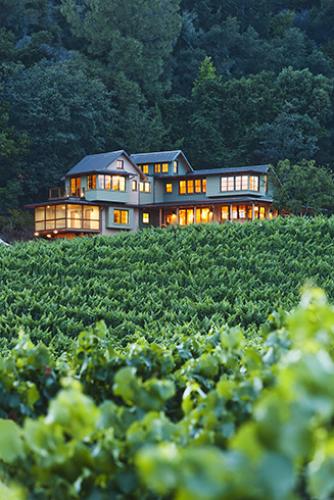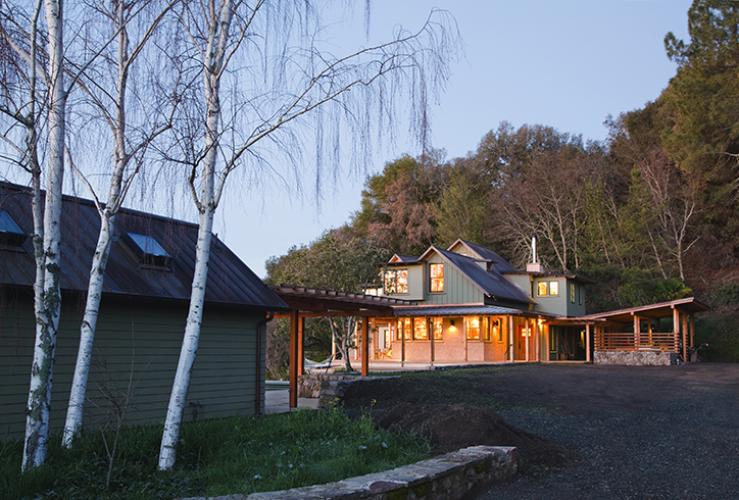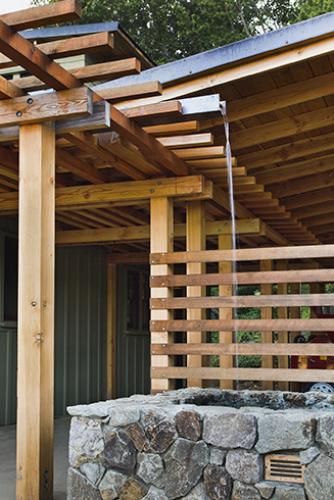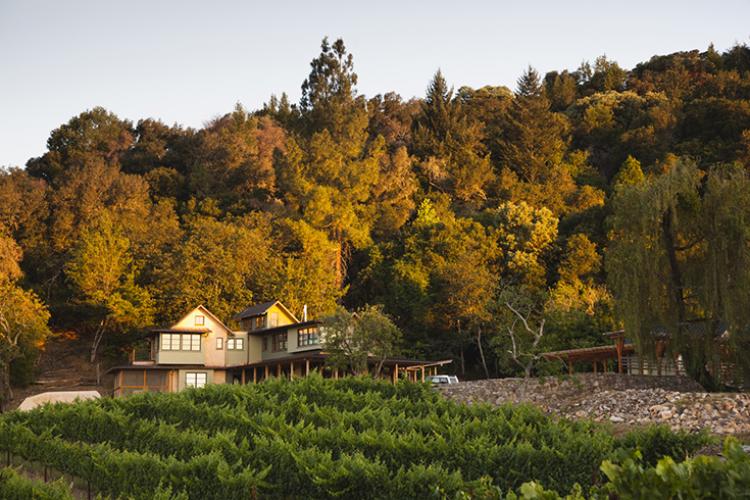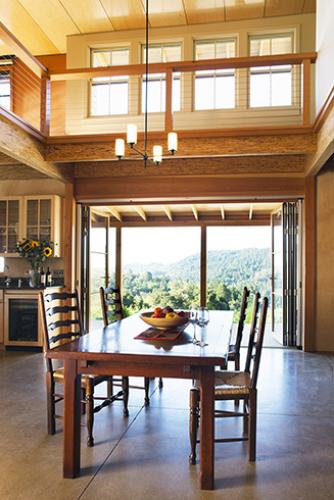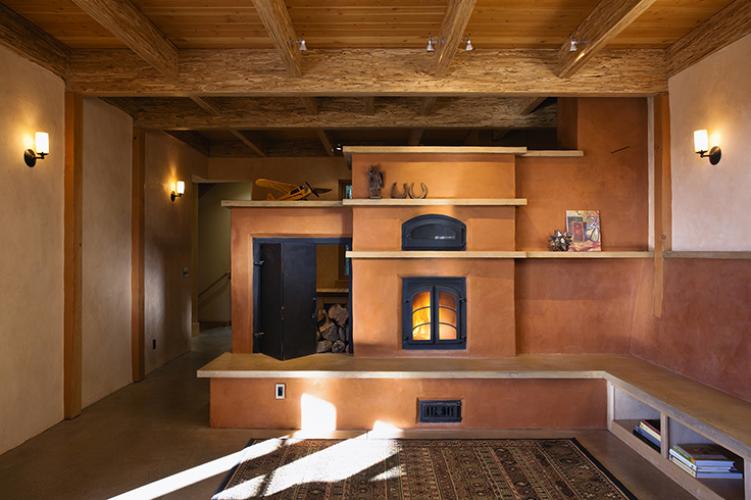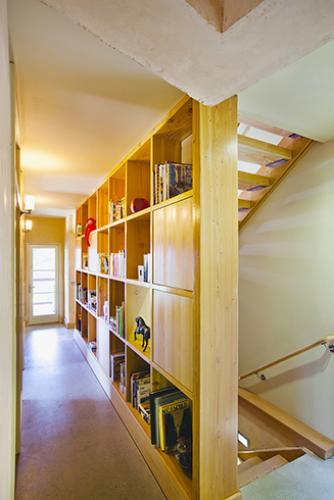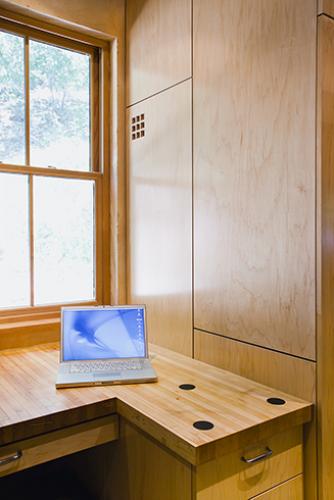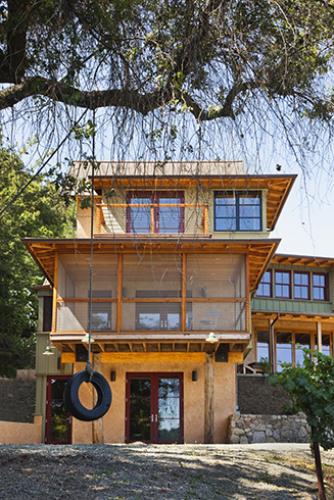This modern farmhouse is sited against the hillside to the west, protecting it from summer afternoon sun while still opening to the vineyard surrounding it. Balancing intimacy and openness, the house is designed to function for a family of 4 plus frequent weekend guests, and for larger gatherings, using as little energy as possible with no petroleum resources.
Simple passive solar strategies such as careful orientation, porches and overhangs, thermal mass, and stack ventilation are combined with a sophisticated heating system that integrates hot water provided by solar collectors along with a heat transfer coil within the masonry heater. The primary heat sink is a solar-heated deep sand bed system that keeps the main floor at a constant temperature, supplemented with hydronic radiant heating in the bedroom wing.
A need to import stable soils led to the digging of the wine cave first, as a source of material that saved the cost and impact of shipping material from off site, as well as providing a naturally climate controlled environment for winemaking, the primary activity at the site.
Talented computer engineers, the owners are now carefully monitoring the performance of the house through a network of wireless sensors, with data accessible via their website.

